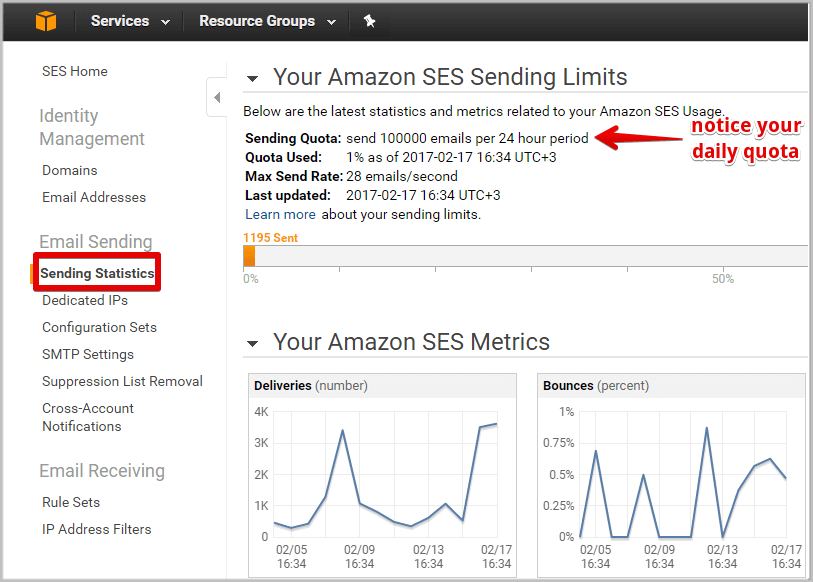
Sudo chmod 0600 /etc/postfix/sasl_passwd /etc/postfix/sasl_passwd.dbġ0. (Note that if you deleted /etc/postfix/sasl_passwd in the previous step, you should omit it from the commands below.) sudo chown root:root /etc/postfix/sasl_passwd /etc/postfix/sasl_passwd.db Because these files contain your SMTP credentials, it is a good idea to use the following commands to change the owner to root and set permissions to restrict access to the files as much as possible. (Optional but recommended) The /etc/postfix/sasl_passwd and /etc/postfix/sasl_passwd.db files you created in the previous steps are not encrypted. (Optional but recommended) Remove the /etc/postfix/sasl_passwd file.ĩ. sudo postmap hash:/etc/postfix/sasl_passwdĨ. At a command prompt, issue the following command to create a hashmap database file containing your SMTP credentials. Your SMTP credentials and your AWS credentials are not the same.ħ. Use your SMTP user name and password, not your AWS access key ID and secret access key. com:25 AXXXXXXXXXXXXXXX:AXXXXXXXXXXXXXXXXXXXXXXXXXXXXXX So it would be something like: :25 AXXXXXXXXXXXXXXXXXX:AXXXXXXXXXXXXXXXXXXXXXXXXXXXXX Please NOTE: These credentials are an example and are now invalid, please do not use them.

Aws email server port password#
The SMTP Username & SMTP Password is what we require ( we may download it as well, for future use). Go to the services tab (in your AWS Console) and select SES.Įnter the user we wish to create (or leave it as default).We have given it a name ses-MyUser We will create a user here and be presented with the following Window (not from the IAM Console ): Now this is where it gets confusing, you will want to create a SMTP User from the SES Console at: Add the following lines to the file, replacing USERNAME and PASSWORD with your SMTP user name and password. Comment out the following line of the master.cf file by putting a # in front of it: -o smtp_fallback_relay=ĥ. This file resides in the /etc/postfix folder.Ĥ. Smtp_sasl_password_maps = hash:/etc/postfix/sasl_passwdģ. Add the following lines to the main.cf file, setting relayhost to the SMTP endpoint of the AWS region we are using. On your mail server, go to the /etc/postfix folder and open the main.cf file.Ģ. To configure integration with the Amazon SES US East (Virginia) endpoint using STARTTLSġ. You should see the following screen, with both sender’s and receiver’s Email as verified.
Aws email server port verification#
Go to that email account and click on the link Amazon will email to you to confirm the address.Click on the verification link to verify the email address.ĥ. Then you’ll see a confirmation message “Verification Email Sent:Ĥ. Enter the Sender’s Email Address and click “Verify This Email Address”.Ĥ.
Then click on the “Verify a New Email Address” button.ģ. In the SES section of the AWS Management Console, in Verified Senders click on “Email Addresses”:Ģ. *In accounts with production access, we just need to verify sender’s email.ġ.

Aws email server port free#
Postfix is a free and open-source mail transfer agent (MTA) that routes and delivers electronic mail.

It has built-in notifications for bounces, complaints, and deliveries which helps us fine-tune our email-sending strategy. Configuring server to relay email through Amazon SES will provide easy, real-time access to our sending statistics.


 0 kommentar(er)
0 kommentar(er)
